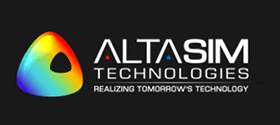In neonatal intensive care, every millimeter and every millisecond counts. That’s why the next generation of infant respiratory devices is going compact, connected, and computational.
Wearables and liquid atomization technologies are revolutionizing neonatal care, and it’s the dedicated work of engineers utilizing COMSOL Multiphysics that is at the forefront of this transformation, inspiring a new era of neonatal care with simulation-driven design.
Mini Machines with Major Impact
Premature and newborn infants often require assistance with breathing. But traditional ventilators are bulky and poorly suited for tiny bodies. New designs feature:
- Wearable CPAP systems
- Miniaturized humidifiers and nebulizers
- Liquid atomizers for medication delivery
These devices are not just about functionality, they must maintain precise airflow, temperature control, and biocompatibility—without introducing additional risks, ensuring the utmost safety and effectiveness for our most vulnerable patients.
COMSOL allows engineers to simulate airflow resistance in narrow tubing, atomization behavior, pressure drop across valves, and oxygen dispersion in infant-sized lung models.
Liquid Atomization: Gentle and Effective
When it comes to delivering inhaled medications or humidified oxygen, atomization is critical. Using COMSOL’s multiphase flow models, engineers can:
- Predict droplet size and distribution
- Optimize nozzle geometry for neonatal delivery
- Simulate condensation and heat transfer
- Analyze air-liquid mixing at micron scales
The goal is to minimize dosage variability, reduce clogging, and ensure that medication reaches the alveoli, not just the upper airway.
Real-World Conditions, Virtually Modeled
Engineers can also model real-world use conditions, such as infant movement, sleep apnea events, changes in nasal pressure, or sudden disconnections. These “what ifs” are tough to test physically, but simulation makes it possible.
With COMSOL’s ability to couple physics (fluid flow, heat transfer, acoustics), respiratory devices can be safely optimized before clinical trials, saving lives before a prototype ever hits the NICU. Contact Us.
